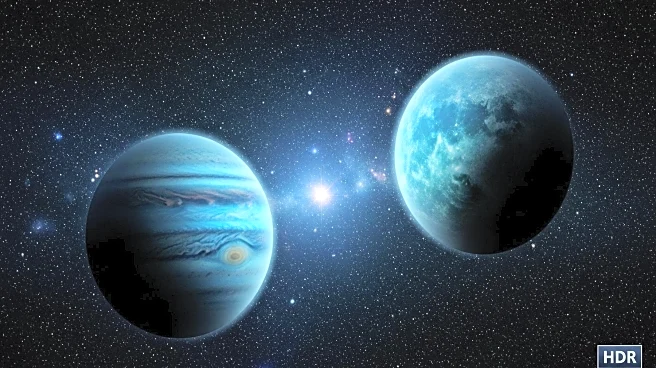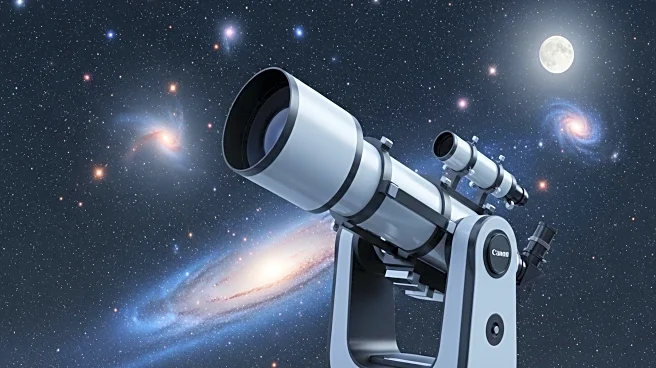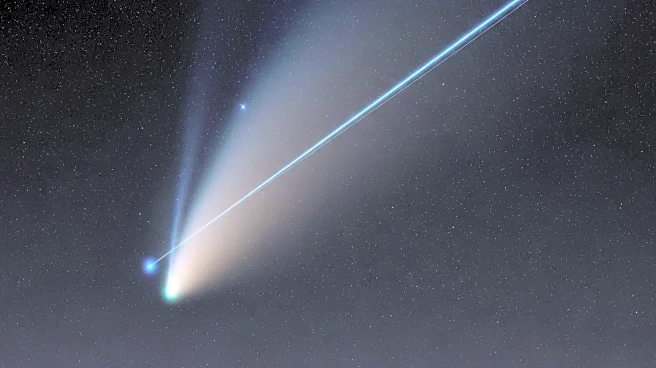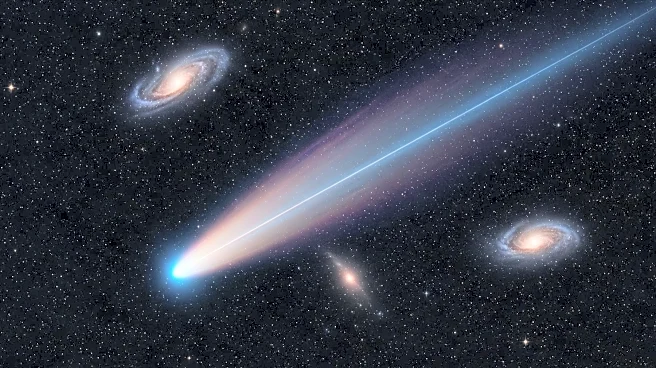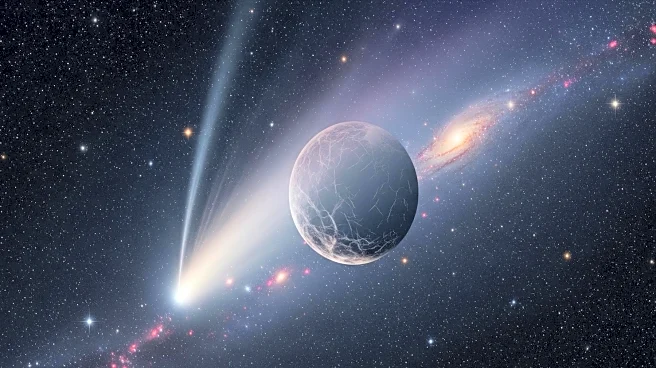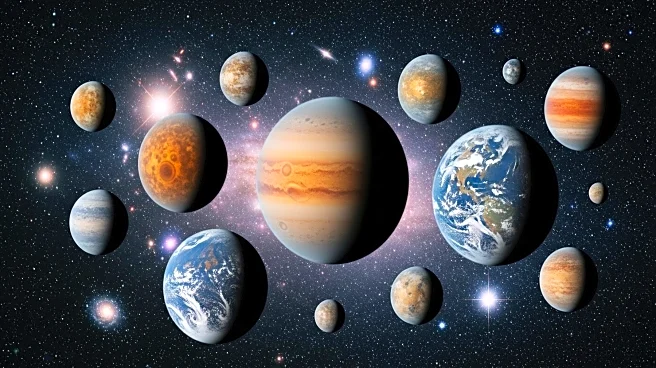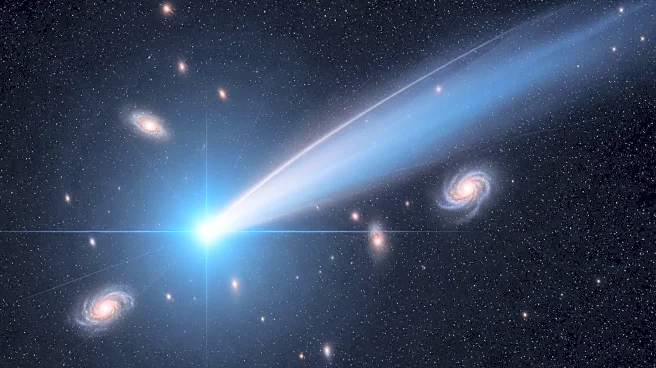What's Happening?
Astronomers have proposed the existence of a new hypothetical planet, dubbed 'Planet Y,' which may be lurking in the Kuiper Belt, a region of the solar system beyond Neptune filled with asteroids, comets, and dwarf planets. This new theory suggests that Planet Y could be closer to Earth than the previously hypothesized Planet Nine, also known as Planet X. Researchers have analyzed the trajectories of 50 Kuiper Belt objects and found a tilt that could be explained by the gravitational influence of a hidden planet. The study, published in the Monthly Notices of the Royal Astronomical Society, posits that Planet Y could be a rocky world with a mass between that of Mercury and Earth, located between 100 and 200 times farther from the sun than Earth. Despite the intriguing findings, the existence of Planet Y remains unproven, and some experts are skeptical.
Why It's Important?
The potential discovery of Planet Y could significantly alter our understanding of the solar system's structure and formation. If confirmed, it would add a new member to the solar system's planetary lineup, challenging existing models of planetary formation and dynamics. The presence of such a planet could explain the unusual orbits of certain Kuiper Belt objects, providing insights into the gravitational forces at play in the outer solar system. This discovery could also impact future astronomical research and exploration, as scientists may need to revise theories about the distribution of mass and matter in the solar system.
What's Next?
Researchers hope that the newly operational Vera C. Rubin Observatory in Chile will help confirm the existence of Planet Y. The observatory's advanced capabilities could provide the necessary data to detect the planet directly or identify more Kuiper Belt objects that fit the patterns observed. If Planet Y is within the telescope's field of view, it could be discovered within the next few years. However, if the planet is not found, the theory may be discarded, and researchers will need to explore alternative explanations for the observed anomalies in the Kuiper Belt.
Beyond the Headlines
The search for Planet Y highlights the challenges and complexities of astronomical research, where indirect evidence often guides hypotheses. The debate over Planet Y's existence underscores the importance of technological advancements in telescopes and observational tools, which can provide more definitive answers to longstanding questions about the solar system. Additionally, the study raises questions about the potential for other undiscovered planets or celestial bodies in the solar system, prompting further exploration and investigation.



